

Dorothea Bate Room,
Natural History Museum, London.
12 November 2009
Organizers
PROFESSOR
MARK DAVIES University of Sunderland (mark...@sunderland.ac.uk)
MARTINE CLAREMONT Imperial College London and Natural History Museum
(m.cl...@nhm.ac.uk)
Assistant Organizer
CLAIRE STANDLEY University of Nottingham and Natural History Museum(c.st...@nhm.ac.uk)
ABSTRACTS
IN ALPHABETICAL ORDER OF FIRST AUTHORS
Evolution
of coral feeding in muricid snails
Tempo and mode of evolution of the genus Conus
in the Cape Verde Islands
Meadow snail communities: influence of environmental
factors and relation to vegetation
Restoration of biogenic reefs of the horse mussel
Modiolus modiolus: reproductive ecology and aquaculture
Landmark-based shape analysis in fossil freshwater
molluscs: methods and perspectives
What is the impact of invasive plants on land snail
assemblages in the alluvial ecosystems?
Interspecific interference competition alters
habitat use patterns in two species of land snails
A new gastropod species of the skeneimorph genus
Dillwynella from the western Atlantic Ocean
Genetic diversity of Mya arenaria (L.) (Bivalvia)
populations from the North Atlantic
Variation in mollusc commumity structure across
a varied landscape in the west of Ireland.
Genetic structure of common whelk (Buccinum
undatum L.) populations in Iceland and the Faroe Islands
Zebra Mussels in Lough Neagh: the story so far…
Monacha cartusiana in
the Czech Republic – range extension and previous molecular
analysis results
The comparison of snail assemblages: an investigation
of dispersal abilities
The usability of geometric morphometrics for exploring
land snail taxonomy
Temperature records preserved in sclerochronological
archives from freshwater pearl mussels.
Unravelling the identity of invasive Asian clams
in European rivers.
Growth and Reproduction in the Antarctic brooding
bivalve Adacnarca nitens, from the Ross Sea
Land snail shell degradation in forest environment
Towards a phylogenetic classification of anomalodesmatan
bivalves
Larval feeding strategies in the wood boring organisms
Teredo and Lyrodus
The first record of Stagnicola turricula
in the Silesian Upland (Southern Poland).
The observation and identification of Biomphalaria
peregrina from Agua Escondida in the Argentinian pampas.
The Pleistocene molluscan succession :reconstructing
Hoxnian interglacial environments in the Thames Valley
Ex situ conservation genetics of the globally endangered
freshwater pearl mussel.
Habitat constrained sexual dimorphism in the shell
of freshwater mussels (Anodonta anatina, Unionidae)
Photos
from the forum.
Evolution
of coral feeding in muricid snails
MARTINE CLAREMONT1,2, DAVID REID2, SUZANNE
WILLIAMS2
1Imperial College London, 2Natural History
Museum, London, email: m.cl...@nhm.ac.uk
Muricid gastropods in the genus Drupella graze coral polyps and cause damage to coral reefs during population outbreaks. Another well known group of coral-feeding muricids are the Coralliophilinae, ecto- and endoparasites that feed suctorially. The only other report of coral feeding among muricids is of grazing on corals by Ergalatax margariticola in Hong Kong. The phylogenetic relationship between Drupella and Ergalatax is unknown, as is their relationship with the Coralliophilinae. We wished to investigate whether the current morphologically-based taxonomy correctly reflects three independent origins of coral feeding behaviour in this family. We used four genes (28S, 16S, 12S and COI) to develop a molecular phylogeny of these coral-feeding groups, and also included a range of other muricids. Our results place Ergalatax within the Drupella clade, whereas coralliophilines are a more distant monophyletic group. This suggests that coral grazing only arose once in the Muricidae, and that parasitism of corals appeared independently. [POSTER]
Tempo
and mode of evolution of the genus Conus in the Cape Verde
Islands
REGINA LOPES DA CUNHA
CCMar – University of Algarve, Campus de Gambelas, 8005-139
Faro, Portugal. rcu...@ualg.pt
Isolated oceanic archipelagos are excellent model systems to study evolution. Phylogenetic analyses among species of the marine gastropod genus Conus from the Cape Verde archipelago, based on partial mitochondrial and nuclear genes, recovered two well-defined clades that correspond to shell size. Molecular-clock dating analysis showed that endemic Cape Verde Conus were originated by two independent colonisations of “small” and “large” shelled species separated by 12 million years. Furthermore, major speciation events were in agreement with sea level changes occurring during the Plio-Pleistocene. The reduced dispersal ability of Conus lecithotrophic larvae promoted allopatric speciation and generated the observed diversity. Phylogenetic relationships within “large” shelled Conus revealed the existence of three divergent clades that do not correspond to current species classification based on shell colour and banding patterns. “Large” shelled Conus remarkably replicated biogeographical patterns of “small” shelled species in which specimens from Sal form monophyletic assemblages whereas Boavista and Maio specimens grouped together. The reduced dispersal ability of lecithotrophic larvae together with repeated instances of low sea level stands that allowed connection between islands, have overcome the effect of historical contingency, and explain the observed recurring biogeographical patterns.
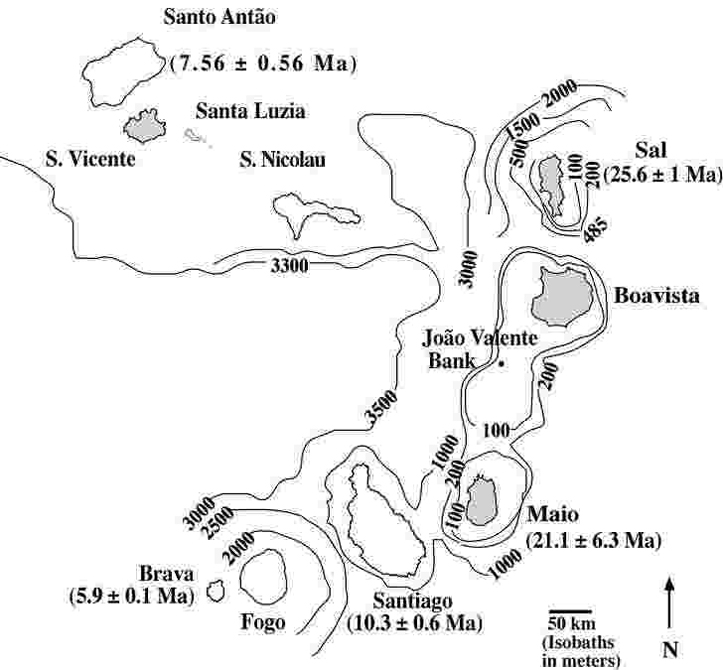
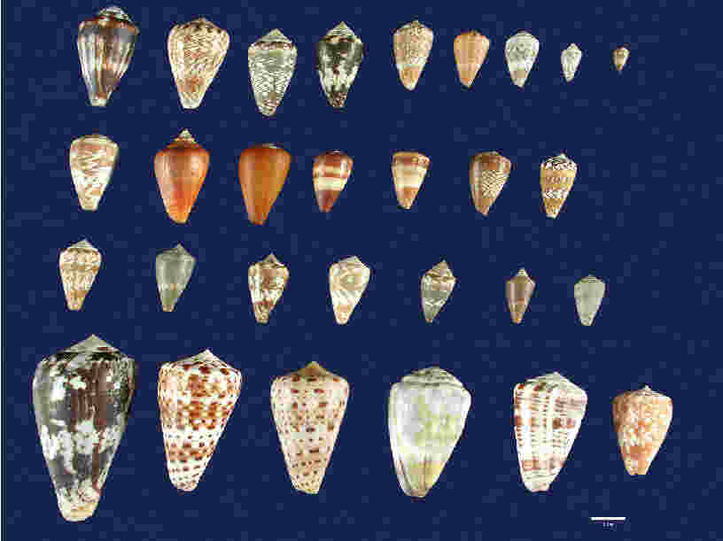
Meadow
snail communities: influence of environmental factors and relation to
vegetation
JANA DVORÁKOVÁ AND MICHAL HORSÁK
Institute of Botany and Zoology, Faculty of Science, Masaryk University,
Kotlárská 2, 611 37 Brno, Czech Republic. jana...@seznam.cz
This study deals
with plant and snail communities of 45 sites in meadow habitats in
the White Carpathians (Czech Republic) and follows two main aims.
1) To investigate the influence of selected environmental factors
on snail species composition and richness. 2) To compare predictive
power of vegetation, Ellenberg plant indicator values and measured
environmental variables for explaining variation of snail communities.
Detrended correspondence analysis showed that soil calcium content
and moisture were the most important factors, which explained most
of the variability in the snail as well as plant communities. The
interaction of these two factors was even more significant. We found
that the main changes of vegetation and snail species composition
were highly correlated, and driven by the same environment factors.
Using the variance partitioning approach we confirmed a good reliability
of Ellenberg indication values and concluded that vegetation composition
can be very useful predictor in snail ecology studies.
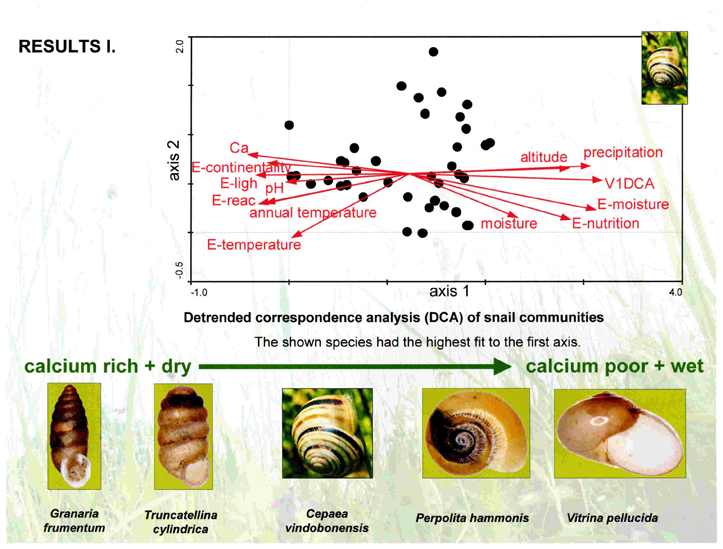
Restoration
of biogenic reefs of the horse mussel Modiolus modiolus: reproductive
ecology and aquaculture
JOSE MARIA FARIÑAS FRANCO
Queen’s University Belfast Marine Laboratory, Northern Ireland
j.fa...@qub.ac.uk
The horse mussel Modiolus modiolus forms biogenic reefs which are crucial to the ecosystem functioning of Strangford Lough but have dramatically declined in recent years. This study focuses on three research areas relevant to Modiolus reef restoration: reproductive cycle, collection of natural spat and development of specific cultivation methodologies. The reproductive cycle of M. modiolus in Strangford Lough is reported to differ from other populations because it lacks seasonality, releasing gametes continuously through the year (Brown, 1976). Under experimental conditions to induce spawning Modiolus modiolus was found to release eggs and sperm until the gonads were spent. The present study will investigate the hypothesis that, in Strangford Lough, M. modiolus is a trickle spawner. The larval cycle was also carefully documented as there are no records of full-cycle culturing experiments of European stock of Modiolus modiolus. The combined results obtained after completion of this research will provide a clear picture of the population ecology and recruitment of Modiolus modiolus in Strangford Lough which will inform biogenic-reef restoration strategies. [POSTER]
Landmark-based
shape analysis in fossil freshwater molluscs: methods and perspectives
DANIELE GIANOLLA
Department of Zoology, Downing street, University of Cambridge CB2
3EJ dani...@uniroma1.it
Shape analysis is very important for defining a species in palaeontology and for reconstructing phylogenetic relationships; in the absence of molecular data, shape analysis is the only way to define a species or to test the reliability of cladistic reconstructions performed on the fossil record. When fossil remains represent those parts of organisms strongly influenced by environmental parameters, like external skeletons, the interpretation of shape is problematic. To more precisely understand the significance of shape variation in a fossil population, a geometrical landmark-based approach (Geometric Morphometrics) is preferable to classical methods of analysis, and it is becoming increasingly adopted in many fields. This work aims to build a landmark database for some Pleistocene freshwater molluscs, helpful for future analyses. The figure shows the “average image” of shells of Tanousia runtoniana-stenostoma gr. (Esu & Gianolla, 2008) with landmarks depicted.
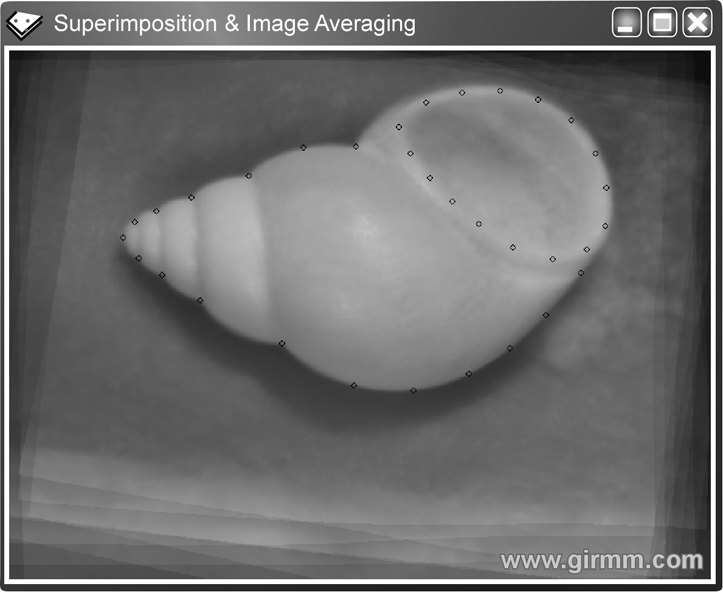
Comparative
analysis of epibiota present on invasive and native oyster species:
Assessing the impacts of invasion
CLAIRE GUY
The Queen’s University Room, Biological Sciences, Room 514a,
The MBC, 97 Lisburn Road, BT9 7BL, Belfast. cgu...@qub.ac.uk
Crassostrea
gigas was introduced to Northern Ireland in the 1970s to provide
an alternative commercial species following the population collapse
of the native species, Ostrea edulis. Research at the time
suggested that the local environmental conditions would not facilitate
successful C. gigas reproduction or settlement. However it
is now apparent that there has been sporadic successful recruitment.
The establishment of invasive species has been linked to broad scale
ecosystem changes and this investigation aims to ascertain how the
continued spread of C. gigas may impact Strangford Lough in
terms of biodiversity. Samples of both oyster species were collected
from the lough and all epibiota were identified. The surface area
and ages of each shell were also calculated and the assemblages compared
using PRIMER 6. This investigation will help us to understand the
potential impacts due to the continued spread of C. gigas on
Strangford Lough and elucidate the need for continued eradication
schemes.
What
is the impact of invasive plants on land snail assemblages in the
alluvial ecosystems?
JITKA HORÁCKOVÁ1, LUCIE JURICKOVÁ2,
MICHAL HORSÁK3
1Department of Ecology, Charles University, Vinicná
7, CZ-128 44 Prague 2, Czech Republic; jit...@centrum.cz
2Department of Zoology, Charles University, Vinicná
7, CZ-128 44 Prague 2, Czech Republic; luci...@seznam.cz
3Department of Botany and Zoology, Masaryk University,
Kotlárská 2, CZ-611 37 Brno, Czech Republic;
hor...@sci.muni.cz
Invasive plants are recognized as a major threat to the biodiversity over the world. It is generally known that invasive plant species can modify soil properties such as nutrient content and can directly influence the composition of the original vegetation. However, it is very little known about their impact on invertebrate soil fauna communities in terms of density and diversity. We investigated the impact of five exotic invasive plant species, Fallopia sachalinensis, Fallopia japonica, Fallopia × bohemica, Impatiens glandulifera and Helianthus tuberosus, on land snail assemblages in the alluvial ecosystems in the Czech Republic. The main project objective was a comparison of the snail assemblages of the natural alluvial ecosystems and invaded river floodplains within the area of the Labe River lower course tributaries. One of these tributaries was Ohre River in the western Bohemia. There were 47 invaded and non-invaded sites researched and the resulting data are presented. [POSTER]
Interspecific
interference competition alters habitat use patterns in two species
of land snails
KAZUKI KIMURA
Chiba Laboratory, Department of Ecology and Evolutionary Biology,
Graduate School of Life Sciences, Tohoku University, Aramaki-Aza-Aoba
6-3, Aoba-ku, Sendai, 980-8578, Japan. kaz...@m.tains.tohoku.ac.jp
For land snails, abiotic factors have commonly been assumed to be the most important factors for shaping communities because resources for land snails are commonly not limiting, and because interspecific resource competition would not be strong enough to promote ecological divergence. However, clear divergence in habitat use is often observed among sympatric land snail species. Such an ecological divergence would be promoted not by resource competition but by other interactions such as aggression. To test this hypothesis, laboratory experiments were designed to explore aggressive behaviour in the land snails Euhadra quaesita and E. peliomphala and field surveys were conducted to examine their habitat use. Our results suggest that habitat use of these species in the natural communities is affected by interspecific interference. These findings further suggest that the divergence of habitat use between the species can occur by aggression even in environments with unlimited resources. [POSTER]
A
new gastropod species of the skeneimorph genus Dillwynella from the
western Atlantic Ocean
THOMAS KUNZE
Invertebrate zoology, Swedish Museum of Natural History, Box 50007,
SE 10405 Stockholm, Sweden
Thom...@nrm.se
Dillwynella
is a marine gastropod genus known from natural wood fall and algal
holdfasts in the Caribbean Sea and the Pacific Ocean, with Dillwynella
modesta (Dall, 1889) as type species. Until recently seven
species of this genus were known. Beside D. modesta three are
described from the New Zealand region and four from Sagami Bay. The
depths range between 120 and 1200 m.
Dillwynella sp. nov. (holotype will be deposited in: The Field
Museum of National History, Chicago, U.S.A.) from the Gulf of Mexico
is the second species found in the Atlantic. It was found on natural
wood fall in a depth of 610 m. With a maximum diameter of 5.5 mm,
it is the largest species of this genus. Description was undertaken
on an adult shell. SEM pictures were taken of dried softpart, radula
(both holotype) and protoconch (paratype). [POSTER]
Genetic
diversity of Mya arenaria (L.) (Bivalvia) populations from
the North Atlantic
RAFAL LASOTA AND MACIEJ WOLOWICZ
Laboratory of Estuarine Ecology, Institute of Oceanography, University
of Gdansk, Al. M. Pilsudskiego 46, 81-372 Gdynia, Poland rlas...@ocean.ug.gda.pl
Genetic diversity
in the soft-shell clam Mya arenaria from 14 locations on the
Atlantic coasts of the North America and Europe was determined using
selected protein loci. The results showed a low/moderate level of
genetic variation in the soft shell clam. Also the geographical structuring
was low, however statistically significant in European populations.
It is concluded that high expansion potential of Mya arenaria
is consistent with the evolution of the generalist genotype in a temporally
changing environment. High gene flow and allele neutrality are reflected
in low genetic differentiation between the populations. As a result
of the “founder effect”, the European populations of the
soft-shell clam show a slightly lower level of heterozygosity than
the source populations from the Atlantic coast of the North America.
There was a weak influence of the founding events on the European
populations when considering a degree of differentiation between Europe
and North America. Mya arenaria was introduced to the Black
Sea from the Baltic Sea. The lack of influence of the founding events
on the gene pool of the Black Sea population suggests colonization
by a high number of pioneer individuals. Populations in the White
Sea and Mediterranean Sea could be established through independent
introductions.
Variation in mollusc community structure across a continuum of grassland,
scrubland and woodland in a limestone landscape in the west of Ireland.
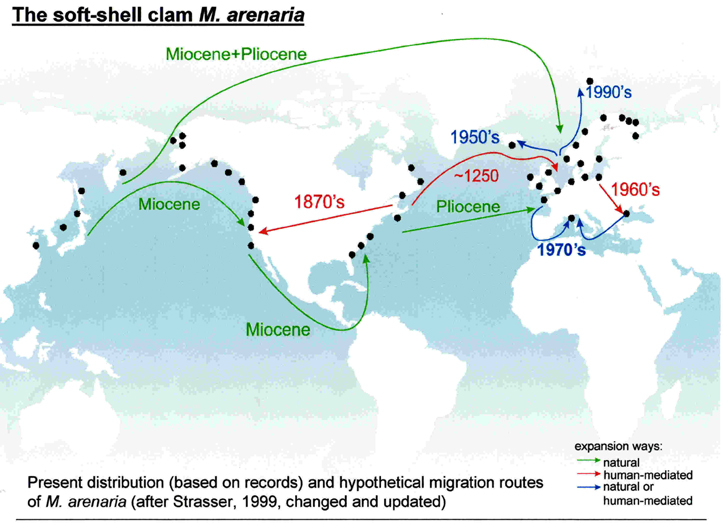
Variation in mollusc commumity structure acrioss a contiuum of grasslane, scrubland and woodland in a limestone landscape in the west of Ireland.
MARIA P. LONG*,
EVELYN A. MOORKENS & DANIEL L. KELLY
*Botany Department, School of Natural Sciences, Trinity College Dublin.
lon...@tcd.ie
With the exception
of a couple of habitat types (namely fens, sand-dunes and marshes
- habitats of some protected species), terrestrial mollusc community
structure has not been well-studied in Ireland. Even less well understood
(and also in an international context) is how this community structure
might vary along a habitat continuum. This study aims to document
the mollusc communities in grassland, scrub and woodland. We test
the hypothesis that the mollusc community structure does not differ
across the successional gradient from grassland, to open scrub, and
to closed woodland in a limestone landscape.
The study is based largely in the Burren, a karst limestone area in
north Co. Clare, but extending into adjacent areas of similar terrain
in Co. Galway. This landscape is famous as one of the most biologically
interesting and biodiverse areas in Ireland but changes in cattle
grazing are producing changes in plant communities, especially growth
of hazel. Findings from this work will be of wide interest in helping
to further our understanding of molluscan community make-up, and its
relationship to habitat type
 .
.
Genetic
structure of common whelk (Buccinum undatum L.) populations in
Iceland and the Faroe Islands
HILDUR MAGNÚSDÓTTIR1,2, ZOPHONÍAS O.
JÓNSSON2 AND ERLA BJÖRK ÖRNÓLFSDÓTTIR1
1Vör – Marine Research Center at Breiðafjörður,
Norðurtangi, 355 Ólafsvík, Iceland.
2 Department of Biology, University of Iceland, Askja, Sturlugata
7, 101 Reykjavík, Iceland
hil...@sjavarrannsoknir.is
The common whelk
(Buccinum undatum) is a subtidal gastropod that is widely distributed
in the North Atlantic as well as the Greenland and Norwegian seas.
The morphology of the common whelk, both in appearance and shell ratios,
is very variable beteween countries and areas. These differences in
morphology indicate that migration of whelks between these areas might
be limited enough to form genetically distinct subpopulations. The
aim of this study is to test the hypothesis of different genetic populations
of the common whelk in Iceland and the Faroe Islands as well as between
areas within Iceland.
To test the hypothesis, whelks were collected from four locations;
two 30 km apart in Breiðafjörður in the west of Iceland,
one in Húnaflói in the northwest of Iceland and one
in the Faroe Islands. DNA was extracted from the mantle of the whelks
and isolated using CTAB and chloroform:isoamyl alcohol. Fragments
of two mitochondrial genes, 16SrRNA and COI, were amplified by PCR.
The PCR product was then sequenced using ABI PRISM 3100 Genetic Analyser.
The study found that both genes have polymorphic sites in the common
whelk and can be used for comparing populations. Preliminary results
suggest that geographical genetic differences do indeed exist between
the test sites. These results will be presented and discussed. [POSTER]
Zebra
Mussels in Lough Neagh: the story so far…
SARAH MCLEAN
Freshwater Fisheries, Agrifood and Biosciences Institute, Northern
Ireland, Headquarters, Newforge Lane, Belfast BT9 5PX smcl...@qub.ac.uk
The observation
of five adult Dreissena polymorpha on a boat hull in Kinnego
Marina, Lough Neagh 2005 initiated a preliminary investigation to
assess whether zebra mussels were present throughout the Lough. The
investigation found 44 settled juveniles at 20 sites. There was no
survey to monitor for planktonic larvae.
In October 2006 plankton tows, spat collection and shoreline surveys
were carried out. Veliger larvae were at densities of 0.0211 veligers
per m³. Settlement was at a mean density of 523.76 juveniles
per m². No adult zebra mussels were found on natural substratum.
A further twenty-four adult mussels (7.5 - 24mm) were found on a hull
in Kinnego Marina.
Since October 2007 the zebra mussel population has been monitored
throughout the life cycle. All stages are present in low numbers,
thus indicating that a breeding population exists. Numbers of mussels
observed are much lower than expected, for this stage in the invasion
history, based on findings in other Irish lakes and internationally.

Monacha
cartusiana (O.F. Mueller, 1774) in the Czech Republic –
range extension and previous molecular analysis results
ALENA MÍKOVCOVÁ1,3, LUCIE JURICKOVÁ2
and ADAM PETRUSEK1
1 Department of Ecology, Charles University in Prague,
CZ;
2 Department of Zoology, Charles University in Prague,
CZ;
3 The Silva Tarouca Research Institute for Landscape and
Ornamental Gardening, Pruhonice, CZ
The non-indigenous land snail Monacha cartusiana (O. F. Müller, 1774) is spreading from its original range in the Mediterranean to Central Europe. The number of populations recorded in the Czech Republic has significantly increased especially in the last 15 years, which makes this species a good model for the evaluation of factors facilitating invasibility of land snails. There are about 140 records for cartusian snail in the Czech Republic, more than 50% were found in the last 3 years (and 80% of new localities after 1989). Passive dispersal research shows the importance of traffic (rails, cars and other vehicles) for the spread of land snails with climbing behaviour. Previous phylogenetic study divided Czech and other European populations of the cartusian snail into 3 groups. The widespread presence of M. cartusiana in the Eastern Europe given in older malacological literature could be questionable in the light of new surveys. [POSTER]
The
comparison of snail assemblages in the river floodplain and fragmented
slope forests above the river: an investigation of dispersal abilities
JAN MYŠÁK
Department of Botany and Zoology, Masaryk University, Kotlárská
2, Brno, CZ-61137, Czech Republic
ancz...@seznam.cz
The aim of this
study was to assess the role of running waters and floodplains as
biocorridors for terrestrial snails. We hypothesise that assemblages
in the floodplain should be more homogeneous in species composition
than those in the slope forests above the river. We also tested whether
the river can constitute a barrier for snail dispersion.
As expected, the median value of the Jaccard similarity coefficient
was highest in the floodplain (50%). Further analysis showed that
assemblages were mostly affected by environmental factors such as
humidity and soil calcium content; connectivity played rather a minor
role. An indication that floodplain could be a biocorridor, is given
by the distribution of invasive Arion lusitanicus Mabille 1868,
which was present almost solely in the whole alluvium. Variation partitioning
showed that the pure effect of affiliation to the right or left bank
was relatively high, in contrast to a small pure contribution of connectivity.
[POSTER]
The
usability of geometric morphometrics for exploring land snail taxonomy
BARNA PÁLL-GERGELY1, SINOS GIOKAS2
1Department of General and Applied Ecology, University
of Pécs, Ifjúság útja 6, H-7624 Pécs,
Hungary, e-mail: pall...@gmail.com
2Section of Animal Biology, Department of Biology, University
of Patras, GR-26500 Patra, Greece, e-mail: sin...@upatras.gr
Systematics and
phylogeny in the clausiliid genus Albinaria is one of the biggest
challenges in land snail taxonomy. Traditional taxonomy is based on
few shell characters only, and the confusing morphological diversity
has resulted in several hundred taxa within the genus. Furthermore,
relatively few taxa have been examined morphometrically or molecularly.
We used landmark-based geometric morphometric approach in order to
investigate whether “classical” taxonomical classification
coincides with general shape discrimination of the shell. The results
suggest that:
(1) A. alajana and A. schuetti exhibit discrete shapes
but their transitional subspecies forms living in southern Turkey
resemble more the former species.
(2) A. brevicollis and A. caerulea living in numerous
isolated populations in the Aegean Archipelago, belong to the same
shape form, in agreement with their molecular phylogeny and in contrast
to classical taxonomy.
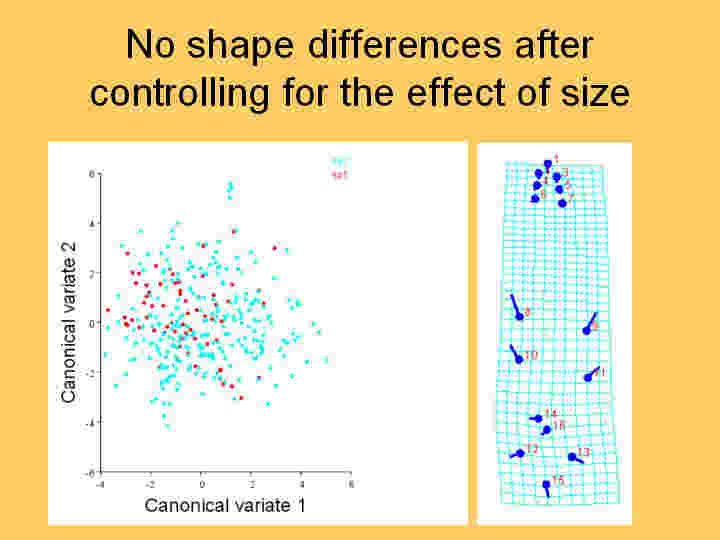
Three
centuries of temperature records in Scotland preserved in sclerochronological
archives from freshwater pearl mussels, Margaritifera margaritifera
(Linnaeus, 1758).
CLAIRE L. PANNELL
National Museums Scotland, Edinburgh, UK and Tony Fallick, SUERC,
East Kilbride, UK.
Bivalves are
natural indicators of environmental variability as they reflect environmental
conditions eg. temperature in annual growth bands within the shell.
Freshwater pearl mussels have been shown to form their shells in oxygen
isotopic equilibrium with the ambient water thus fluctuations in water
temperature may be constrained from the d18Ocarbonate
data. As long as the date of collection is known, annual growth increments
may provide a precise dating tool for isotope samples. Measurements
of consecutive increments serve as records of isotopic composition
from which derived temperatures may be correlated with other sample
series and annual instrumental records, giving a high resolution proxy
for temperature for a given region. The use of NMS museum specimens
has the potential to establish a composite three hundred year record
of Scottish environmental change. Results have implications for the
use of archaeological and subfossil shells in the reconstruction of
past climates.
[POSTER]
Unravelling
the identity of invasive Asian clams (Corbicula spp.- Corbiculidae-
Bivalvia) in European rivers.
PIGNEUR LISE-MARIE, ROLAND KATHLEEN, DESCY JEAN-PIERRE, VAN DONINCK
KARINE
Unit of Research in Organismal Biology (URBO), University of Namur,
Rue de Bruxelles, 61, 5000 Namur – Belgium
lise...@fundp.ac.be
Asian clams of
the genus Corbicula are successful aquatic invaders in America
and Europe. Moreover the genus Corbicula exhibits various reproductive
modes with sexually reproducing species as well as hermaphrodites,
some or all reproducing through androgenesis*. Although recent studies
elucidated most of the New World invasion, the systematic identification
and origin of European Corbicula lineages is unresolved. Here
we present the first study re-investigating the different morphotypes
and haplotypes of European Corbicula species in order to elucidate
their systematics. We tackled this issue using morphometrics, mitochondrial
COI gene sequencing and some preliminary microsatellite analyses.
In our phylogenetic data set we included haplotypes of American forms
and some Asian lineages. Three morphotypes and three genetic lineages
were found. In some specimens we found a nuclear-mitochondrial disjunction
suggesting an androgenetic mitochondrial capture between two distinct
lineages.
*Androgenesis (“paternal inheritance”): fertilization
of oocyte by unreduced sperm. Maternal chromosomes are extruded as
2 polar bodies, and only chromosomes from sperm are involved in zygote
development, although mitochondria and other organelles from ‘mother’
are retained.
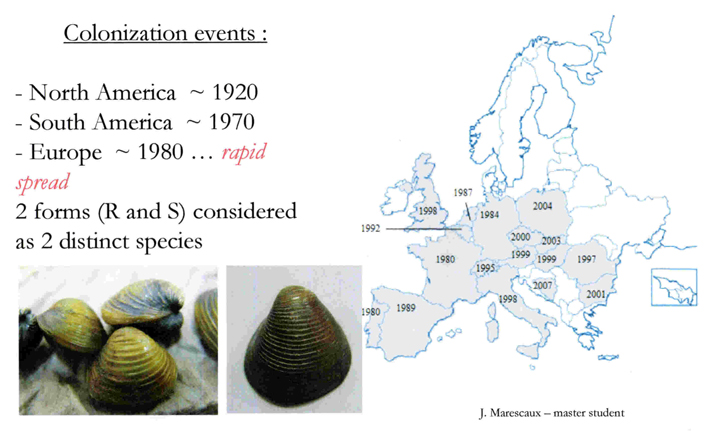
Growth
and Reproduction in the Antarctic brooding bivalve Adacnarca nitens
(Philobryidae), from the Ross Sea
ADAM J. REED
Room 166/03, School of Ocean and Earth Science, National Oceanography
Centre, European Way, Southampton, SO14 3ZH adam...@noc.soton.ac.uk
Data are presented on the reproductive biology, population structure and growth of the brooding Antarctic bivalve Adacnarca nitens Pelseneer 1903 from the Ross Sea. This species shows low fecundity and large egg size, common to brooding species. Individuals ranging from 0.85-6.00 mm were found attached to a hydrozoan colony. The minimum size at which oogenesis was detected was 2.30 mm and the minimum size at which brooding was evident was 3.92 mm. Embryos of a full range of developmental stages were brooded simultaneously in females. The population showed a log-normal distribution and results suggest non-periodic reproduction with continuous embryo development. The reproductive traits of A. nitens are discussed in a biogeographic and evolutionary context. [POSTER]
Higgs ND, Reed AJ, Hooke R, Honey DJ, Heilmayer O, Thatje S (2009) Growth and reproduction in the Antarctic brooding bivalve Adacnarca nitens (Philobryidae) from the Ross Sea. Marine Biology 156: 1073-1081
Land
snail shell degradation in forest environment
DAGMAR RIHOVA
Dept. of Invertebrate Zoology, Faculty of Science, Charles University,
Vinicna 7 128 44, Prague 2, Czech Republic Bran...@seznam.cz
Experimental
shell degradation of nine common Central European pulmonate snail
species in forest ecosystems in the Czech Republic was investigated.
Model shells were deposited for 6, 12, 24 and 36 months in leaf litter
of six different places; then removed, dried and photographed. Set
of alternations was analysed by CANOCO 4.5 statistical system.
Small species degrade differently from large ones. Large species corrode
outwards, after periostracum disruption the ostracum dissolves and
holes appear. Small species corrode out from within, calcium carbonate
dissolves and small windows arise.
The shell degradation proceeds with different rate on various localities.
Some localities have characteristic types of alteration, e.g. peat
bog pine forest exhibits ostracum dissolution and periostracum deformation.
The ultimate influence of the degradation is caused by soil pH value
and humidity. Shell shape and size have effect on its degradation.
Moreover, other important decomposition agents are living animals.
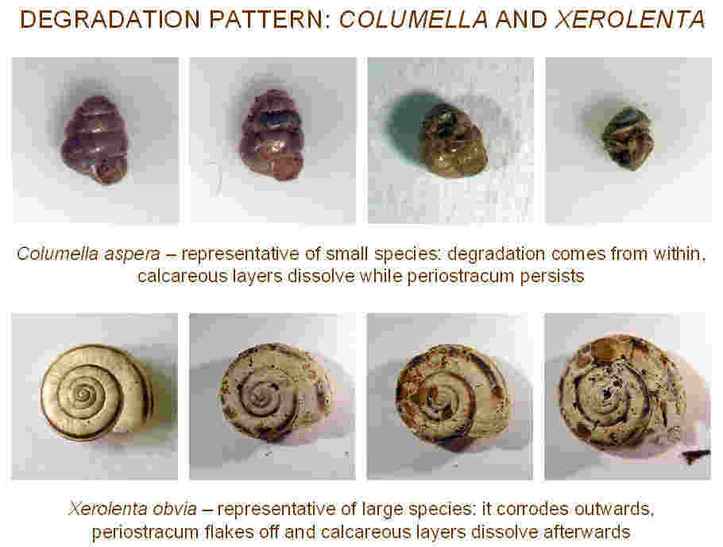
Towards
a phylogenetic classification of anomalodesmatan bivalves
ANDRÉ F. SARTORI
Department of Earth Sciences, University of Cambridge, CB2 3EQ andr...@gatesscholar.org
Anomalodesmatans comprise an ancient and ecologically diverse group of marine bivalves, but are nonetheless inconspicuous in most extant shallow water communities. For various reasons, which include their present scarcity and a bewildering array of disparate morphologies, anomalodesmatans have always proved difficult to interpret, and their systematics lagged behind those of most other major bivalve taxa. In recent years, morphological and molecular studies of the group have produced incongruent results, casting doubts over the monophyletic status of component superfamilies and precluding the recognition of putative synapomorphies for clades recovered in molecular investigations. Cladistic analysis of a novel matrix of morphological characters, the largest compiled for anomalodesmatans to date, suggests that enhanced taxonomic sampling and more rigorous character analyses and delimitation are paramount in solving conflicts among the distinct datasets. Recovered clades are broadly congruent with those suggested by molecular data and their putative synapomorphies are suggested for the first time.
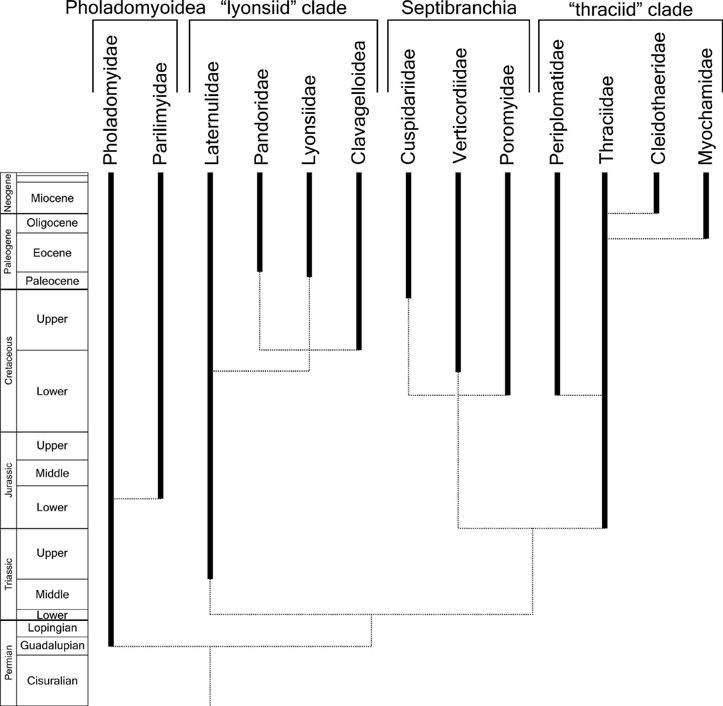
Larval
feeding strategies in the wood boring organisms Teredo and
Lyrodus
REUBEN SHIPWAY
University of Portsmouth, reub...@googlemail.com
It has been briefly mentioned in literature that adults supply food development in the brood-carrying, wood-boring bivalves Lyrodus and Teredo (Teredinidae). This is particularly interesting in that this suggests a rare case of matrotrophy for marine bivalves, however no published evidence is available. The aim of this project is to provide such evidence. Emphasis will be placed on the source of food for the larvae, with the feeding strategies between the different species also being compared. A variety of microscopic techniques (light, SEM and TEM) will be used to study the brood pouches and the larvae contained within them. This will enable us to describe the structures involved in feeding and to confirm the nature of the larval feeding mechanism. [POSTER]
The
first record of Stagnicola turricula (Held, 1836) (Gastropoda:
Pulmonata: Lymnaeidae) in the Silesian Upland (Southern Poland)
KATARZYNA SKOWRONSKA1, IGA LEWIN2, PIOTR CUBER3
1 Upper Silesian Nature Heritage Centre, Katowice, Poland.
2The University of Silesia, Faculty of Biology and Environmental
Protection, Department of Hydrobiology, Katowice, Poland. 3
Medical University of Silesia in Katowice, School of Pharmacy, Institute
of Parasitology, Sosnowiec, Poland
The Silesian Upland,
the most urbanized and industrialised region in Poland, is devoid
of natural water bodies. Only anthropogenic reservoirs, including
mining subsidence reservoirs, dam reservoirs, sand pit reservoirs
or fish ponds, are numerous. To date 36 freshwater gastropod species
and 15 bivalve species have been recorded in this area.
Stagnicola turricula, which was recorded by the authors in 2 anthropogenic
reservoirs, is a new species to the Silesian Upland. The reservoirs
were created in the 1960s as a result of the peat exploitation.
In these reservoirs 15 mollusc species have been found. Among them,
Stagnicola turricula, Anisus spirorbis, Hippeutis
complanatus and Musculium lacustre are recorded in the
‘Red List of Threatened Animals in Poland’.
The density of S. turricula in the reservoirs ranges from 1
to 49 individuals/m2. The study of the environmental factors which
influence the occurrence of S. turricula was started in May,
2009 and is ongoing.
The
observation and identification of Biomphalaria peregrina (Orbignyi,
1835) from Agua Escondida in the Argentinian pampas
CLAIRE STANDLEY1,2, J. P. POINTIER3, C. WISNIVESKY-COLLI4,
J. R. STOTHARD1
1Division of Biomedical Parasitology, Department of Zoology,
Natural History Museum, England,
2Institute of Genetics, School of Biology, University of
Nottingham,
3Laboratoire Ecosystèmes Aquatiques Tropicaux et
Méditerranéens, Université de Perpignan, France,
4Unidad
de Ecología de Reservorios y Vectores de Parásitos,
Universidad de Buenos Aires, Argentina
Biomphalaria snails are small, freshwater pulmonates of biomedical importance found throughout South America. Here, we describe the observation and process of identification of a newly-discovered population of Biomphalaria peregrina from Agua Escondida, in Mendoza Province, Argentina. This was done by looking at both morphological characters and molecular data, which were compared to existing descriptions of Biomphalaria species. A ‘barcode’ for the species was also created and published online. This observation is important, given the remoteness and aridity of the location, in understanding more about the ecology and life history of these biomedically important snails. [POSTER]
The
Pleistocene molluscan succession from Swanscombe, Kent, UK: reconstructing
Hoxnian interglacial environments in the Thames Valley
TOM S. WHITE
Department of Zoology, University of Cambridge, Downing Street, Cambridge,
CB2 3EJ
t.wh...@zoo.cam.ac.uk
The Pleistocene
interglacial deposits preserved at Swanscombe represent the Hoxnian
stage (~ 425–375 ka). The sequence of gravels, sands and loams
has yielded important palaeontological and archaeological assemblages
and is most famous for the rare discovery of a hominin cranium.
The molluscan succession represents deposits exposed at Barnfield
Pit (the skull site) and nearby Dierden’s Pit and has important
palaeoenvironmental and palaeogeographical implications for reconstructions
of Hoxnian environments in Britain. Species belonging to the ‘Rhenish
suite’ of freshwater molluscs, which now have a central European
distribution, first appear in the middle of the sequence (notably
Theodoxus danubialis). It has been suggested that the presence
of the ‘Rhenish’ fauna in the Thames during the Hoxnian
indicates fluvial connection with continental rivers. Evidence for
sea-level change is also apparent; the ostracod Cyprideis torosa,
which indicates brackish conditions, appears late in the sequence,
suggesting the onset of insularity.
Ex
situ conservation genetics of the globally endangered freshwater pearl
mussel Margaritifera margaritifera (L.)
CONOR WILSON.
Quercus, Queen’s University Belfast, MBC, 97 Lisburn Road. cwil...@qub.ac.uk
Margaritifera margaritifera is an infaunal unionid that has faced a significant decline across its holarctic range since the beginning of the 19th century. There are many reasons for its decline including habitat degradation and historic overfishing. A popular conservation tool used to halt the decline of endangered species is captive breeding, however, often it is assumed that the captive population are representative of wild stocks. Genetic information can be used to manage captive populations that are used to generate stocks for supplementation and reintroduction. Here we emphasize the importance of genetic information in endangered species biology having used microsatellite analysis to examine captive and wild populations of M. margaritifera in Northern Ireland. The main aims of this study were to determine whether the ex-situ population encompassed all the genetic diversity of the wild populations, or a subset, and whether the wild populations were differentiated form each other.
Habitat
constrained sexual dimorphism in the shell of freshwater mussels (Anodonta
anatina, Unionidae)
ALEXANDRA ZIERITZ AND DAVID ALDRIDGE
Department of Zoology, University of Cambridge, Downing Street, CB2
3EJ Cambridge, UK.
Dramatic differences in the shell morphology of male and female freshwater mussels have been described in some North American species (especially Lampsilinae), with females often exhibiting expanded posterior margins to accommodate brooding gills. Sexual dimorphism in European unionid mussels is far less studied and contradictory observations have been published in this respect. We investigated sexual shell dimorphisms within five Anodonta anatina populations from a range of UK freshwater habitats. In populations exhibiting comparatively fast growth rates and large maximum shell sizes, female shells were significantly more inflated and thinner than males. However, such dimorphic patterns in shell width and thickness could not be seen in slow-growing populations where mussels reached smaller sizes. Our observations suggest that interpopulational differences in shell dimorphism might be caused by differences in habitat conditions, which can sometimes constrain expression of the female phenotype.
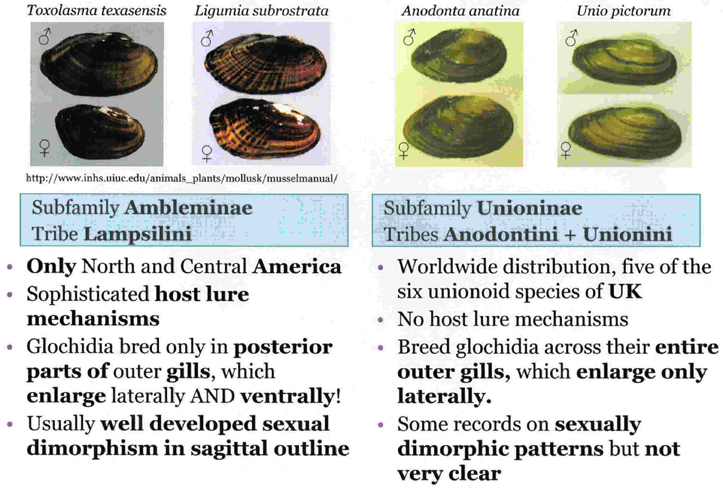
Participants at the Molluscan Forum, Natural History Museum, London, 12th November 2009
Beata Pokryszko, Davis Aldridge and Robert Cameron
Suzanne Williams and Andre Sartori
Jana Dvorakova, Jan Mysak, Dagmar Rihova
Martine Claremont and Claire Standley
Dinarzarde Raheem and Elizabeth Platts
Tom White, Danielle Gianolla (Richard Preece in the background)and Martine Claremont
Dagmar Rihova, Sarah McLean and Rafal Lasota
Alexandrra Zieritz, Nicole Spann and Simit Patel